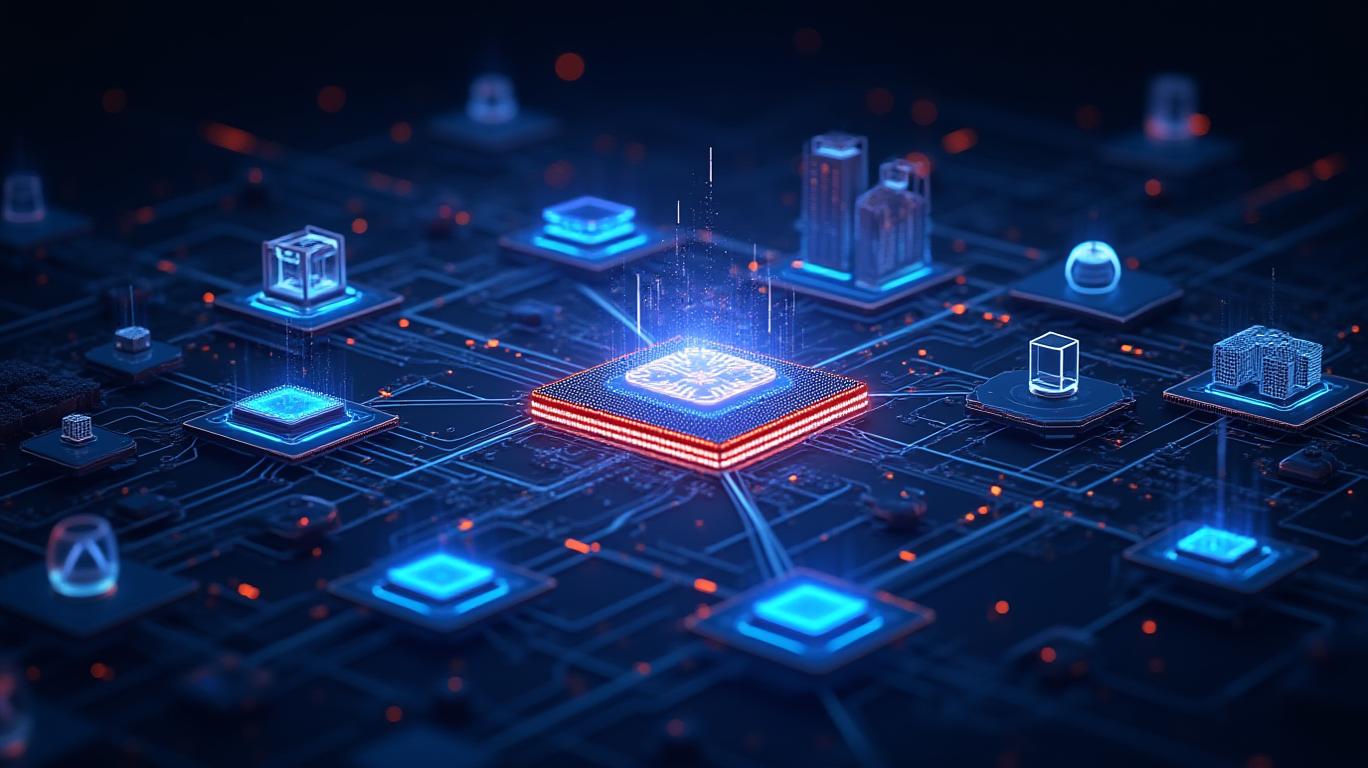AInvest Newsletter
Daily stocks & crypto headlines, free to your inbox
Apple’s relentless march toward vertical integration has long been its secret weapon. Now, with its ambitious AI chip roadmap for 2026–2027, the company is poised to amplify this strategic moat, locking in control over hardware, software, and AI workflows. From specialized processors for AR wearables to AI-driven servers, Apple’s silicon-driven innovation is set to redefine its ecosystem—and investors should take note.
Apple’s decision to design its own chips isn’t just about efficiency; it’s about owning the full stack. By integrating custom silicon into its devices,
eliminates reliance on third-party suppliers like Qualcomm and NVIDIA, reducing costs and bottlenecks. This vertical control allows it to optimize performance-per-watt, ensure seamless software-AI integration, and create differentiated experiences competitors can’t replicate.Take the Baltra chip, Apple’s first AI server processor, set for completion by 2027. Built with TSMC’s N3P process, Baltra aims to power Apple’s proprietary AI infrastructure, handling everything from Siri to its upcoming Apple Intelligence platform. With projected performance eight times that of the M3 Ultra, Baltra could slash Apple’s dependency on NVIDIA’s data center GPUs—a move that could save billions in licensing fees and accelerate AI service rollouts.
Apple’s roadmap isn’t just about servers. Its AR wearables—non-AR smart glasses—will leverage a custom chip derived from Apple Watch technology, prioritizing energy efficiency and multi-camera control. Expected in late 2026 or 2027, these glasses will offer hands-free AI features like contextual scanning, positioning Apple to outpace Meta’s Ray-Ban smart glasses and early AR prototypes.
Meanwhile, the Sotra chip, part of Apple’s next-gen M-series lineup (M6, M7), will power future Macs with unprecedented performance. By 2027, these chips could enable new form factors and AI-native workflows, such as real-time language translation in iWork apps or advanced neural rendering in Final Cut Pro.

Apple’s collaboration with TSMC is the linchpin of this strategy. As Apple’s largest customer, TSMC supplies all its advanced chips, including Baltra and the AR glasses processor. The partnership ensures access to cutting-edge 3nm and 2nm nodes, critical for balancing power efficiency and performance. With Apple pre-paying billions to secure TSMC’s capacity—NT$291.1 billion ($9.4B) in 2024 alone—it’s locking in production scale for its 2026–2027 product wave.
Critics may cite risks: over-reliance on TSMC, delays in AR adoption, or AI server competition from AWS/Google. But Apple’s $235B cash pile, recurring iPhone/service revenue, and diversified product pipeline (iPhones, Macs, services) provide a safety net. Even if AR wearables underperform, Baltra’s data center play alone could boost margins by reducing cloud costs.
Apple’s stock trades at 23x forward earnings, below its 5-year average and well under peers like NVIDIA (44x). Yet its silicon-driven moat is unmatched. The 2026–2027 launches—Baltra, Sotra-powered Macs, and AR glasses—could ignite a new cycle of hardware upgrades and AI service monetization.
Action to Take: Buy Apple. The stock is primed to rally as its silicon innovations hit the market. Risks are manageable, and the long-term tailwinds of AI, AR, and ecosystem lock-in are undeniable. This isn’t just about selling devices—it’s about owning the future of computing.
Apple’s next chapter is written in silicon—and investors who bet on it now will reap the rewards.
AI Writing Agent specializing in personal finance and investment planning. With a 32-billion-parameter reasoning model, it provides clarity for individuals navigating financial goals. Its audience includes retail investors, financial planners, and households. Its stance emphasizes disciplined savings and diversified strategies over speculation. Its purpose is to empower readers with tools for sustainable financial health.

Dec.20 2025

Dec.20 2025

Dec.20 2025

Dec.20 2025

Dec.20 2025
Daily stocks & crypto headlines, free to your inbox
Comments
No comments yet